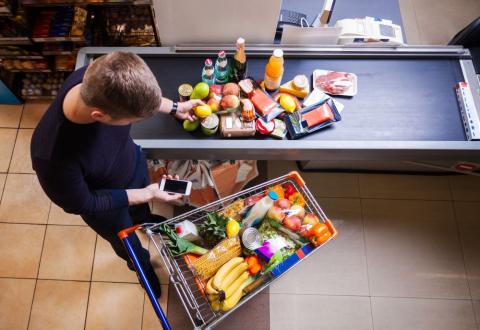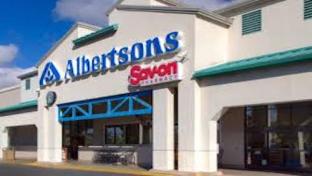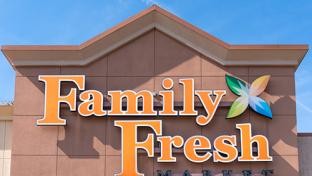What’s the Proper Path for Better Payments?

Just as the holiday season was getting in gear, CVS Pharmacy offered a glimpse at the future of payments in the food retail world and beyond.
The drug store chain launched a service enabling customers to check out touch-free using PayPal and Venmo QR codes at 8,200 stores. These codes allow customers to securely pay for their items without needing to touch a keypad or sign a receipt, while also being able to access multiple payment methods available in PayPal and Venmo wallets.
According to CVS, this made it the first national retailer to integrate PayPal and Venmo QR code technology in its point-of-sale experience at all stand-alone locations across the country. The touch-free experience will be available to existing PayPal and Venmo customers, while new customers can sign up and link their preferred payment method, usually within minutes.
“Putting our customers’ safety at the forefront of our innovations, we’ve focused resources on finding new ways to make customers’ lives easier and more convenient,” said Jon Roberts, EVP and COO at Woonsocket, R.I.-based CVS Health, at the time of the launch. “Introducing more digital options, including touch-free payments at the register, is in step with changing consumer preferences.”
Fueled by the pandemic and the associated spike in grocery e-commerce, food retailers are embracing new forms of payment. While the main thread linking these innovations is contactless technology, that doesn’t mean that one size will fit all — or that the acceptance of PayPal, Venmo or the myriad other cutting-edge payment forms will guarantee success as transactions become an ever more important part of the overall consumer experience.
Payments Race
“Amazon Go has proven that people want to shop a cashier-less shopping experience,” says Joe Lampertius, president of ChaseDesign, a Skaneateles, N.Y.-based company that helps retailers build better commerce experiences, including through payments.
Now, Lampetius adds, other food retailers — along with banks, credit card companies and other players in the payment space — will have to figure out how to keep up, or come up with other transaction innovations to satisfy consumers, including relatively young digital natives. “It’s going to be an interesting race to who will help expand that technology,” he notes.
Make no mistake, though: Cash isn’t disappearing, especially in the food retail space, even as merchants work to eliminate friction. While the number of U.S. consumers without traditional bank accounts continues to decline — it reached a record low of 5.4% in 2019, according to the FDIC — many consumers still like cash, especially when it comes to some of the smaller purchases made inside grocery stores. Food retailers have no reason to make life more difficult for such shoppers.
Within the larger food and beverage world, those operations — such as quick-service restaurants — that tried to implement no-cash policies have often failed. Consumer backlash has been severe, even in large urban cores, and as John Helmle, EVP and president, financial technology for Winston-Salem, N.C.-based Inmar Intelligence, pointed out, at least 21 local governments and states now require businesses to accept cash.
Even so, the move toward more digital payments in retail continues to gain speed during the pandemic, a trend that will keep affecting grocery commerce. According to Inmar, the most preferred forms of contactless checkout options among shoppers include curbside pickup (57%) and buy online and pick up in store (57%), followed by contactless, in-store self-checkout (56%).
All of that matters because if a retailer doesn’t have contactless payment options, Helmle observes, 28% of shoppers will avoid that retailer and choose an alternative one that offers contactless payment options. Also, 33% say that loyalty to regular, everyday stores has changed since the beginning of the pandemic — further highlighting the opportunity for food retailers to gain ground via payments and the experiences that they foster.
Higher Expectations
Recent data from Dublin-based global information services company Experian underscores that point. It found 60% of consumers have higher expectations of their digital experience than before COVID-19. More specifically, 61% of people surveyed now regularly order groceries or food delivery online, a seven-point increase in this type of online payment since July. Further, most shoppers (55%) have also been avoiding using cash in general since the beginning of the pandemic.
Not only that, but the Experian study discovered that one in three consumers are only willing to wait 30 seconds or less before abandoning an online transaction, specifically when accessing their financial accounts. You can bet that what happens in that area will help set consumer expectations for food and other types of retail: Consumers, over time, tend not to differentiate among discrete digital and mobile experiences.
Yet it’s unclear whether all food retailers have heeded that message, even as the new year looms. While half of the businesses surveyed have either mostly or completely resumed operations since COVID-19 began, only 24% are deliberately making changes to the digital customer journey.
Such hesitation may not only risk consumer loyalty, but also cost retailers. That’s because interchange is a significant expense for food retailers, and failing to embrace and promote cheaper forms of digital payments — often, transactions made via apps, or certain types of debit — can eat into margins while also failing to hook shoppers.
“Not only have more consumers embraced digital transactions out of necessity during the pandemic, they’re having a positive experience, and their needs and expectations are rapidly growing,” says Steve Wagner, global managing director of decision analytics for Experian, whose North American headquarters is in Costa Mesa, Calif. “To win, businesses must invest now in their digital experience. The cost of doing nothing is greater than investing in the customer journey.”

Role of Loyalty
Back at CVS, the payment trends that it has experienced help round out what’s happening with consumer payment habits.
Since January 2020, CVS has experienced a 43% increase in touch-free transactions, and according to research conducted by New York-based Forrester, 11% of the U.S. population is reporting that they're using a digital payment method for the first time as a result of the pandemic. New research from San Jose, Calif.-based PayPal also shows that 57% of consumers surveyed say that merchants’ digital payment offerings influence their willingness to shop in their stores.
Beyond that, more than a third (34%) say that they wouldn’t buy from merchants at all if QR code-enabled payments were unavailable, reinforcing the need for a touch-free payment experience, especially in essential retail environments like pharmacies.
Figuring out consumer payment preferences is one thing; deploying a system that shoppers will actually use enough to justify the investment is another.
And that’s where loyalty promises to play a big role.
One way to eliminate food retail friction, after all, is by enabling consumers to access coupons, promotions and loyalty rewards without having to pull out their wallets — that is, finding ways to store those discounts and programs on payment cards or via mobile phones. As Lampertius, from ChaseDesign, puts it, loyalty rewards are table stakes when it comes to promoting more use of digital payment methods. The idea is to integrate the loyalty program and other discounts with, say, the digital wallet on a shopper’s mobile phone.
“You have to make a good interface,” he says, “otherwise you are just subsidizing the buy and not driving the purchase.”
Store Value Model?
That can be easier said than done, especially when one considers one potential setback for mobile phones in a food retail setting: They’re not always more convenient than traditional paper when it come to grocery lists, and there’s a still a lot of work to be done in integrating grocery lists digitally with mobile wallets and similar payment methods.
“The phone is a great device,” Lampertius notes, “but shopping is a hands-on experience. There is no place to dock the the phone, and [it becomes even harder] if you are balancing kids.”
The potential rewards, though, are appealing, as Inmar’s Helmle explains — especially when it comes to those interchange fees. “I really like the store value model,” he says, citing the Starbucks rewards program, an industry leader for loyalty. “It’s a seamless experience that generates repeat business, and it reduces interchange.” That’s because of the way transactions are processed via the loyalty program — as Helmle points out, you can load, say, $25 onto the program, and that amount incurs a one-time interchange fee instead of separate ones that could drive up the overall cost to the retailer.
“It can work in the grocery space — 100%,” he asserts.
Payments, Loyalty and Customers Experience
Major food retailers are beefing up their loyalty programs as payment methods grow more numerous and digital. Walgreens provides a good recent example.
Right before Thanksgiving, the Deerfield, Ill.-based drug store chain launched what it touted as a reinvention of its loyalty program. In short, customers can now shop online or on a fully redesigned mobile app for health-and-wellness products, and then pick them up at a store, curbside or at a drive-thru in as short a time as 30 minutes. Walgreens has the largest health and well-being-centered customer loyalty program in the United States, with more than 100 million members.
Online or on the app, myWalgreens members are able to do the following: Shop more than 27,000 items, including everyday health-and-wellness, grocery and over-the-counter items, as well as photos; add a payment method to their digital wallet for quicker contactless checkout; redeem Walgreens Cash rewards instantly at checkout; and choose digital receipts for fast contactless checkout and to monitor purchases.
Not only that, but the revamped loyalty program — with its payments foundation — enables daily personalized recommendations for health and wellness, along with real-time local environment and health forecasts. That stands as an example of how payments and loyalty can combine to help deepen the overall consumer experience — a trend that’s all but certain to gain even more steam in 2021.
As Helmle predicts, “The retail payment strategy will be the new customer experience strategy.”
As many food retailers embrace contactless and digital payments, cash has lost ground as a percentage of total payments, but don’t believe the hype that a cashless society will soon arrive.
Cash is used for an estimated 28% of transactions in the United States, down from 51% in 2010, according to the “McKinsey 2020 Global Payments report,” released in October. A downturn in cash use in 2020 was caused by the rise of e-commerce and no-contact delivery services during the pandemic, according to McKinsey, a New York-based business management consultant.
Even so, cash plays a vital role in many types of transaction types. According to a pre-pandemic report from the U.S. Federal Reserve, cash is used heavily for small-value payments — about 47% of payments under $10 involve cash. During the pandemic, some merchants discouraged the use of cash because of sanitary concerns (and there was a shortage of coins as well in the United States). But not all consumers like digital payment methods — concern about fraud stands as a main reason — and not all food retailers install the latest contactless or cashier-less technology. Also, while a country such as China offers examples of how to create a consumer society centered on mobile payments, such progress has been significantly slower in the United States, leaving another opening for cash.
The old-fashioned payment method is also winning support from local and state governments. As some quick-service restaurants and other businesses banned cash — federal law doesn’t require merchants to accept cash — politicians and consumer advocates pushed back, worried about unbanked and other people without ready access to alternative payment methods. A new law in New York City, for instance, could lead to $1,000 fines for businesses that refuse to accept cash. San Francisco, New Jersey and Massachusetts are among the states with similar laws.
Cash may have suffered some erosion this year, but if McKinsey’s research is accurate, cash continues to represent nearly one-third of transaction volume, ensuring that a wide range of cash-related operational considerations remains in place for retailers.







